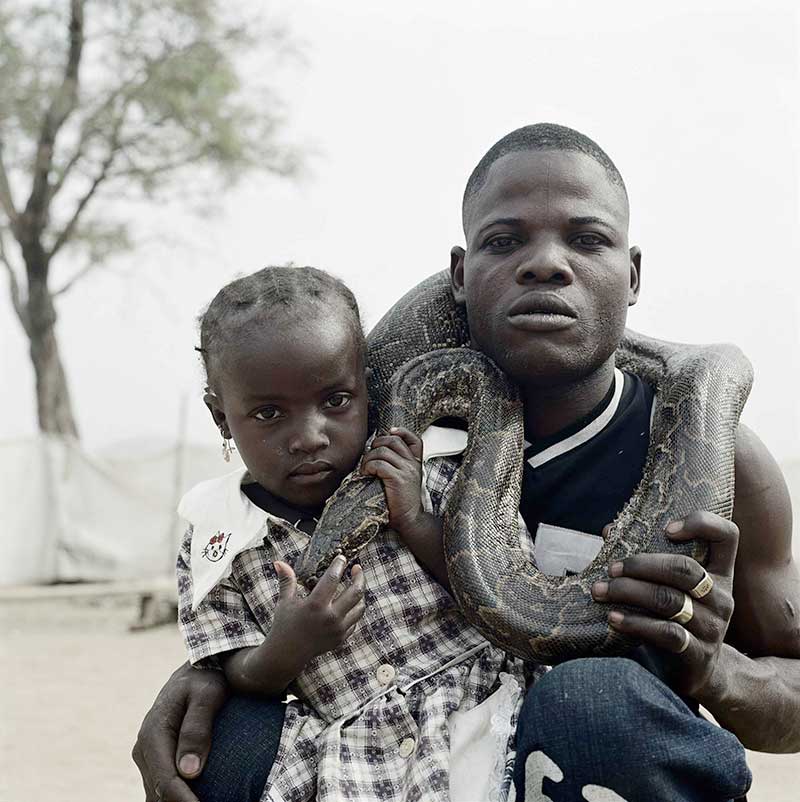
Mummy Ahmadu and a Snake Charmer with a Rock Python, Abuja, Nigeria, 2005
Working primarily on the African continent, Pieter Hugo’s career has focused on photographing marginalised communities and those on the periphery of society. His seminal series The Hyena and Other Men (2005-2007) portrays a troupe of animal trainers in northern Nigeria.
The hyena men, or Gadawan Kura, are an itinerant, extended family that make their living catching, training and performing with wild animals. Trading on mysticism and superstition, the men are traditional storytellers who perform for crowds on the streets with their animals, selling medicines and charms. Hugo found the group – several men, several rock pythons, three hyenas, four baboons and a young girl – while they were staying in a shantytown near Abuja.
Hugo’s portraits of the group are confrontational, yet complex. Finding quiet moments in between performances, Hugo depicts a stillness and intimacy that subverts the tense physicality of both the animals and the men. He focuses on the connection between the animals and their trainers, revealing a co-dependent relationship that is fraught and uneasy. The series examines the opposing concepts of tradition and modernity in the Gadawan Kura’s nomadic existence, but also of wildness and domesticity, and of dominance and submission.
The tension between the urban and the wild is intensified by the theatrical posturing of the men, wielding sticks and grasping at the collars and chains of their animals, against the emptied out and detritus-strewn landscape of the shantytown. The photographs were made during Harmattan season, a time between November and March when the sands of the Sahara Desert blow over western Africa, creating a diffused and muted light that strip the photographs of colour. Desolate and diaphanous, the photographs, and their reduced colour palette, allude to liminal and precarious world in which this group of men exist
(By Thea Gregory)
